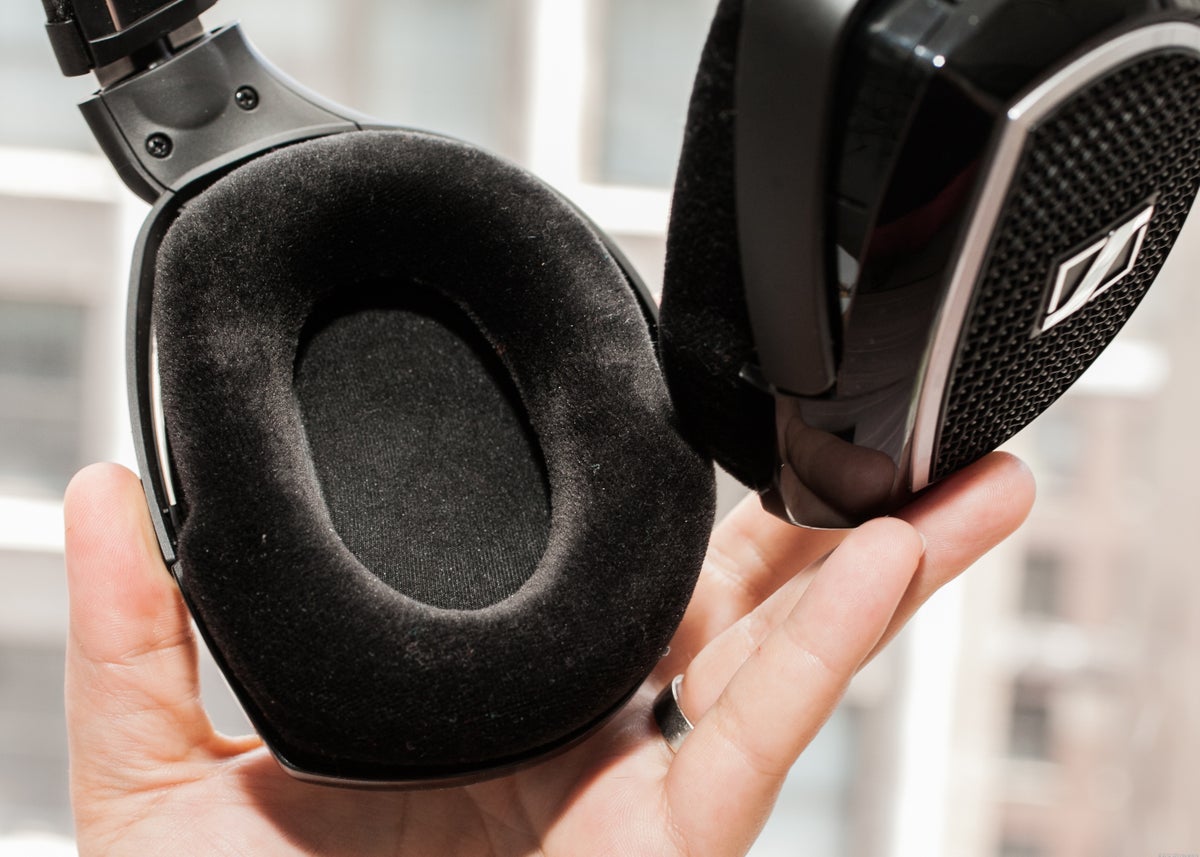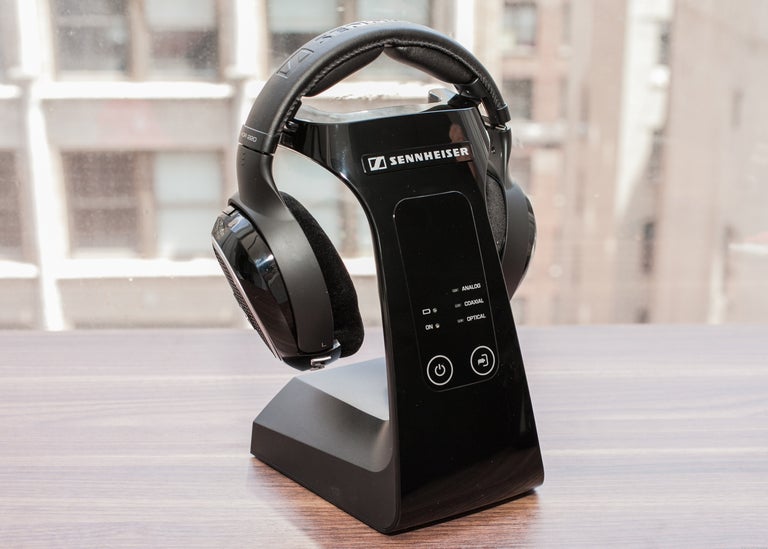 Why You Can Trust CNET
Why You Can Trust CNET Sennheiser RS 220 review: Sennheiser RS 220
The RS 220 is a worthwhile buy at $599, and the $329.95 RS 180 headphones sound close enough in sonic quality for everyone else shopping without an unlimited budget.
The Sennheiser RS 220 ($599) was conceived as a design statement and uses the same driver elements as the reference grade Sennheiser 600 series of wired headphones. Their plastic construction doesn't feel worthy of the price tag, but the material still feels durable and keeps the weight down to just 0.73 pound, making them lighter than most full-size wired models.
The Good
The Bad
The Bottom Line
While I concede that the RS 220 is the best-sounding full-size wireless headphone I've heard, the Sennheiser HD 180 sounds almost as good and costs $329.95. Unless you're only satisfied with the best, save your money and get the RS 180.
Design and features
The RS 220 is an open-back, over-ear headphone, so its sound will be audible to people nearby. That might rule out its use in bed, and if that's a concern, Sennheiser's RS 170 closed-back wireless headphone is a better alternative. However, the upside to open-back designs like the RS 220 is they don't isolate the wearer, letting you hear environmental sounds from all around you.

The connectivity suite may not seem all that generous for a top-of-the-line wireless headphone system, but it's better than what Sennheiser offers on its less expensive systems. The transmitter can be hooked up to an AV receiver, TV, Blu-Ray player, computer, laptop, tablet, etc. The power supply comes with four multi-country power receptacle adapters: for the U.S, U.K., Australia, and the EU.
One downside to DSSS is that it uses more power than the KLEER system, so the RS 220 has a much shorter playing time at 6 to 8 hours versus the 24 hours for the RS 170 and RS 180. Like those two headphones, the RS 220 is powered by a single NiMH (nickel-metal hydride) AAA battery in each ear cup.
Based on its digital connectivity, I expected the RS 220 to feature onboard Dolby TrueHD and DTS Master Audio processing, but it can't actually decode any type of Dolby or DTS signal. If you want to use the RS 220's digital input, you have to set your AV receiver, player, or TV to send PCM digital signals to the RS 220 transmitter/charger base.
If you can't do that for some reason, use the 3.5mm stereo analog input. I listened to the analog and digital inputs and found they sound identical, but I could achieve slightly louder maximum volume with the analog connection.
Accessories include a coaxial digital cable with RCA connectors, a stereo analog cable with RCA connectors, and a stereo 3.5mm plug to two female RCA jacks adaptor. The RS 220 comes with a two-year warranty, and a proof of purchase or sales receipt from an authorized dealer is required for warranty claims.
Unfortunately, you can't buy extra RS 220 headphones to use with the transmitter/charger base -- Sennheiser doesn't sell RS 220 headphones a la carte. If that's what you need, definitely go for Sennheiser's RS 170 and RS 180 wireless models that let you can use up to four headphones with one transmitter base.
Performance
The RS 220 sounds like what it is, an audiophile headphone, but one that just also happens to be wireless. That's notable because of its rarity, and the RS 220 has a degree of refinement/clarity lacking in the less-expensive models. Still, the differences between the headphones aren't dramatic and certainly don't justify a $270 price jump.
The RS 220 definitely unleashes a bigger, more spacious sound field, and the treble is more refined and clear. Classical music CDs sound especially natural, and Leonard Cohen's "Old Ideas" exemplified the RS 220's audiophile appeal.
Turning up the heat with "The Raconteurs: Live in Montreux" 2008 concert Blu-Ray, the RS 220 handled the rock band's massive sonic onslaught with ease. Switching over to the RS 170, the sound showed some signs of strain with the volume turned up loud, but that headphone actually played slightly louder than the RS 220, at the sacrifice of its sonic clarity.
Comparing the RS 220 with another wireless headphone was one thing, but the real test of the RS 220's sound came when I plugged-in my wired Sennheiser HD 580, a close relative to the HD 600 and cited by Sennheiser as a reference for the RS 220 design team. Both headphones sound open and spacious, with the source appearing to come from outside the ear cups instead of sounding stuck inside my head.
The RS 220's tonal balance is a little richer as well, while the HD 580 is more dynamically alive and "crisp," as tested with Eminem's "Live From New York City" DVD. The RS 220's bass is accurate and nicely defined, but probably won't satisfy headphone buyers lusting after heavyweight bass oomph. The wired HD 580 headphone can definitely play a lot louder than the RS 220.
That wasn't a concern with the RS 180, and turning on its ALC (automatic level control) feature boosts the quieter parts of the mix, which is why I recommend the RS 180 for folks with impaired hearing (and it's also a great sounding headphone).
Conclusion
The RS 220 is expensive at $599, and the $329.95 RS 180 sound gets close enough if you don't have an unlimited budget. On the other hand, if you're the type of consumer who wants the best wireless headphone on the planet, the RS 220s are certainly worth it. Other than their inability to play at super loud volumes, they nearly match the sound quality of Sennheiser's reference grade 600 wired headphones, and that's a boon for a wireless headphone at any price.


